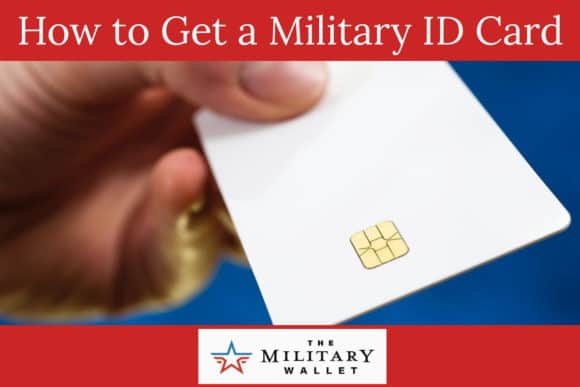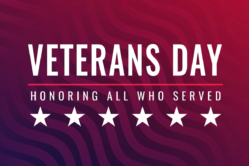Table of Contents
A military identification card can unlock various valuable benefits, including health care through TRICARE, education benefits, and access to base facilities, such as the Commissary, Base Exchange, Morale, Welfare & Recreation (MWR) centers, and other support agencies.
In this article, we will cover who is eligible for a military ID, the forms of military IDs available, alternative methods of proof of military service, and how to renew your military or dependent ID card.
Who is Eligible For a Military ID?
Unfortunately, getting a military ID card isn’t always as easy as walking onto your local military installation and requesting one. Only certain individuals are eligible to receive a military ID card.
You must be in the DEERS system to receive a new military ID card. This includes the service member (sponsor) and eligible dependents (entered into DEERS by the sponsor).
You are usually eligible to receive a military ID if you currently serve in the military (active duty, Guard, Reserve, or Inactive Ready Reserve) or are a military retiree. Qualified dependents are eligible for military dependent ID cards as well.
Military ID Card Types
The U.S. Department of Defense (DoD) issues two main types of identification: Common Access Cards and Next Generation Uniform Services ID Cards. Below, we break down each ID type and who qualifies.
Common Access Card
The Common Access Card (CAC) is the primary ID for active-duty service members and active Reserve and Guard members. In some cases, it may also be issued to DoD civilian employees and contractors.
The CAC allows access to military installations, buildings, and secured networks. It also documents your affiliation with the DoD and provides access to military services, benefits, and programs.
There are four different types of Common Access Cards. The type of CAC you receive depends on your affiliation with the DoD or federal agency authorizing your request for a military ID card.
| Common Access Card Type | Who is Eligible |
|---|---|
| Armed Forces of the United States Geneva Conventions Identification Card | – Active Duty Armed Forces – Selected Reserves – Reserve and National Guard Members on active duty for more than 30 days – Contracted Reserve Officer Training Corps (ROTC) cadets – National Oceanic and Atmospheric Administration (NOAA) – U.S. Public Health Services (PHS) |
| U.S. DoD and/or Uniformed Services Identification Card | – DoD and uniformed Services civilian employees – Eligible DoD, U.S. Coast Guard, and NOAA contractors – U.S. Coast Guard, National Oceanic and Atmospheric Administration – State employees working in support of the National Guard, Intergovernmental Personnel Act employees, and non-DoD federal employees working in support of DoD |
| U.S. DoD and/or Uniformed Services Geneva Conventions Identification Card for Civilians Accompanying the Armed Forces | – Emergency-essential civilian employees – Contingency contractor personnel |
| U.S. DoD and/or Uniformed Services Identification and Privilege Card | – DoD and uniformed Services civilian employees living on a military installation within the United States or employed and residing in foreign countries for at least 365 days – DoD contractors stationed or employed and residing in foreign countries for at least 365 days – DoD Presidential appointees – Certain Red Cross personnel – Eligible foreign military personnel |
Next Generation Uniformed Services ID Card
The Next Generation USID card was introduced in 2020 and is printed on plastic cardstock, unlike the paper-based legacy USID cards. It features an updated design and security upgrades to prevent counterfeiting and fraud.
Uniform Services Identification (USID) cards are typically issued to military retirees (including gray area retirees), Individual Ready Reserve members, dependent family members of uniformed service members, and others who may be eligible for certain military benefits. Some examples include Medal of Honor recipients, veterans who are eligible for the Transitional Health Care Member (TAMP) program, and 100% disabled veterans.
Military dependents may include, but are not limited to:
- A lawful spouse
- Un-remarried surviving spouse
- Unmarried children (including adopted or stepchildren) who are: under 21 years of age, over 21 but incapable of self-support (documentation is required), over 21 but under 23 who are attending an approved learning institution as a full-time student (documentation is required).
There are additional eligibility rules for former spouses, dependent parents/in-laws, and certain other cases. Contact your card issuing service for additional information.
Next Generation USIDs are divided into three types of cards, each with unique eligibility criteria.
| Next Generation USID Card Type | Who is Eligible |
|---|---|
| Armed Forces of the United States Geneva Conventions Identification Card | – Members of the Individual Ready Reserves and Inactive National Guard – Non-CAC-eligible civilian noncombatant personnel deployed in conjunction with military operations overseas |
| U.S. Department of Defense / Uniformed Services Sponsor Identification and Privilege Card | – Retired members entitled to retired pay – Members of the Temporary Disability Retired List and Permanent Disability Retired List – Retired members of the Reserves and National Guard – Medal of Honor recipients – 100% Disabled Veterans – Former members in receipt of retired pay – Transitional Health Care Member (TAMP) – Full-time paid United Service Organizations (USO) personnel when serving OCONUS – United Seaman’s Service (USS) Personnel OCONUS – Officers and Crews of MSC vessels deployed to foreign countries |
| U.S. Department of Defense / Uniformed Services Dependent Identification and Privilege Card | Dependents of: – Active duty service members – Reserve service members on active duty for more than 30 days – Retirees – Medal of Honor recipients – Former members in receipt of retired pay – Transitional Health Care Members (TAMP) – 100% Disabled Veterans – Ship’s Officers and Crewmembers of NOAA Vessels – Reserve members not on active duty or in receipt of retired pay – Former members not in receipt of retired pay – Reserve Service members who die after receipt of NOE Surviving Dependents of: – Active duty and retired Service members – Medal of Honor recipients |
What is on Military ID Cards?
Military ID cards include the member’s name, affiliation (uniformed services), agency/department (branch of service), expiration date, rank, date of birth, DoD ID number, benefits number, and additional information found in the bar code, chip, and/or magnetic strip.
The DoD phased out the use of social security numbers on military ID cards and retiree ID cards starting in 2009. The DoD ID number is now the primary identifier.
ADVERTISEMENT
How to Get a Military ID
Military ID cards are available through any Real-Time Automated Personnel Identification System (RAPIDS) site. RAPIDS sites are located on military installations, National Guard armories, and Reserve training locations. Here is a RAPIDS Appointment Scheduler user guide to help you navigate the site and set up your ID card appointment.
If you are a dependent, you must provide a completed DD Form 1172-2 signed by your sponsor.
ADVERTISEMENT
Documents Needed For Military ID Card
Applicants must provide at least two current and original forms of identification from the lists below. At least one must be from the primary identity source document list, and you can use one form of ID from the secondary identity source document list. You must also have proof of a name change, if applicable.
Primary Identity Source Document List
You must have at least one of the following:
- U.S. passport or U.S. passport card
- U.S. driver’s license or state-issued ID card, with photo
- U.S. military ID card
- U.S. military dependent’s card
- Permanent Resident Card or Alien Registration Receipt Card (Form (I-551)
- Foreign passport
- Employment authorization document, with photo
- Personal identity verification (PIV) card
Secondary Identity Source Document List
The secondary identity source document may be a form of ID from the list above, provided it is not the same type. For example, you cannot use two different passports from two different countries as your form of ID.
- U.S. social security card
- Birth certificate with official seal – Must be an original or certified copy issued by a state, county, municipal authority, possession or outlying possession of the United States
- ID card issued by a federal, state, or local government agency or entity; must have a photograph
- Voter’s registration card
- U.S. Coast Guard Merchant Mariner Card
- Certificate of U.S. citizenship (Form N-560 or N-561)
- Certificate of naturalization (Form N-550 or N-570)
- U.S. citizen IF card (Form I-197)
- Identification card for use of resident citizen in the U.S. (Form I-179)
- Certification of birth abroad or certification of report of birth issued by the Department of State (Form FS-545 or Form DS-1350)
- Temporary resident card (Form I-688)
- Employment authorization card (Form I-688A)
- Reentry permit (Form I-327)
- Refugee travel document (Form I-571)
- Employment authorization document issued by the Department of Homeland Security (DHS)
- Employment authorization document issued by DHS, with photograph (Form I-688B)
- Foreign ID with photograph
- Driver’s license issued by a Canadian government entity
- Native American tribunal document
ADVERTISEMENT
Military ID Card Renewal and Replacement
The process to renew or change information on your military ID is similar to how you first got it, but with a few changes:
- Your current Uniformed Services ID Card counts as one of your two forms of identification.
- You can apply to renew or replace your dependent or military retiree ID using the ID Card Office online.
Again, your DEERS profile needs to be up to date to change your ID card. You can check or change your DEERS information online through MilConnect.
Other Ways to Prove Military Service
A military ID card is an official way to prove your military affiliation, but some people prefer not to pull their ID cards out in public. And, of course, many veterans wish to show proof of service but are no longer eligible for a military ID card. In those cases, you need a different way to prove your military service:
1. Form DD 214
The easiest way to prove your military service without a military ID card is with a DD Form 214, the military discharge paper outlining your service record. This is issued to all military members when they separate from military service.
Unfortunately, carrying around a letter-size document is inconvenient. One tip we have received from many veterans is to take your DD Form 214 to an office supply store and ask them to shrink the card to a wallet-size version and laminate it. This will give you a wallet-sized document that will prove your service.
2. State Driver’s License or ID Card
Many states now include a veteran endorsement on their state-issued driver’s licenses or ID cards. If this is the case, you should be able to get an ID card through your state. Call your state Department of Motor Vehicles or licensing branch for more information. You will likely need to bring your DD Form 214 to prove your military service.
3. Veteran ID Card Programs
There are VA-issued veteran ID cards for retired service members who don’t qualify for a military ID card. These cards may unlock certain benefits, gain base access for certain activities, and more. It’s important to note that these cards are not considered official government-issued identification by U.S. federal or state governments. Their primary function is to serve as proof of military service, which can be used to obtain veteran discounts in your community.
Read more about the VA veteran ID cards.
4. Veterans Service Organization Membership Card
Many veterans service organizations, such as the DAV, VFW, and American Legion, have membership cards. Check with your local military organization for eligibility requirements.
Do you know of any other forms of ID that can be used to prove military service? If so, please contact us. We will add it to the list.




Comments:
About the comments on this site:
These responses are not provided or commissioned by the bank advertiser. Responses have not been reviewed, approved or otherwise endorsed by the bank advertiser. It is not the bank advertiser’s responsibility to ensure all posts and/or questions are answered.
Carolyn O'Connor says
Can I get a military ID card if I’m 90% service-connected TDIU P&T by the VA and getting paid at 100% rate?
Ryan Guina says
Carolyn, please contact the closest base Pass & ID office. They can help you understand your eligibility and which documents are required if you are eligible. Best wishes!